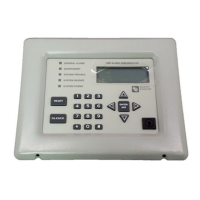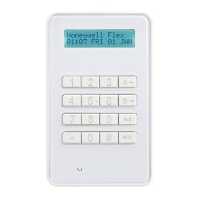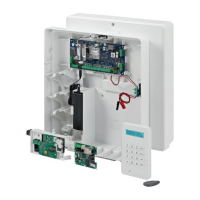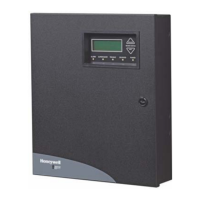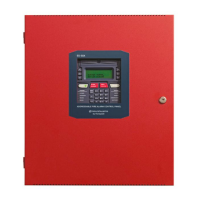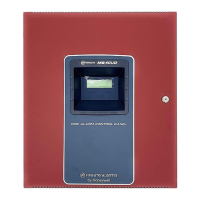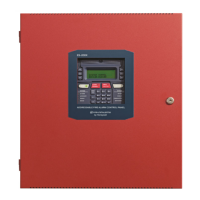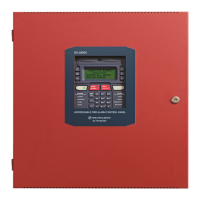IFP-300 / IFP-300ECS Manual P/N LS10145-001SK-E:B 12/18/2017 120
9.5.3 Point Programming For Internal or External Power Module (RPS-1000)
To program for an internal or external power module points:
1. Enter the installer code. The panel will automatically go to the main menu.
2. Select 7 for Panel Programming.
3. Press 4 to enter point menu.
4. Press the up or down arrow key to select the desired module. Refer to Section “Programming Menu Quick Reference” on page 97
for available choices, then press ENTER.
5. Enter the number of the circuit or point you wish to edit, then press ENTER.
6. Select the type by pressing the up or down arrow key, then press ENTER.
7. Select the function by pressing the up or down arrow key, then press ENTER.
8. If the point supports latching press the up or down arrow key to select latching or non-latching, then press ENTER.
9. Select the zone or group by pressing the up or down arrow key, then press ENTER.
10. If the point supports not being supervised, press the up or down arrow key to select supervised or non-supervised, then press
ENTER.
11. Press ENTER to edit point name. See “Editing Text Using the Built-In Programmer” on page 195. Or, Press right arrow key to skip
point name edit.
SWITCH
(cont.)
ECS INPUT Latching User also has ECS Event Number 1-8 option for ECS INPUT.
Only available when an ECS-VCM or ECS-NVCM is installed in the
system.
Non Latching
ECS TAMPER Latching
Non Latching
ECS SUPER-
VISORY
Latching
Non Latching
CO DETECT
SWITCH
CO Detector Switch
CO
SUPERVISORY
DETECT SWITCH
Latching CO Supervisory Detector Switch
Non Latching
NOTIF
OUTPUT PT Select Group Output point, a general use notification type. Use for driving
standard notification appliances.
AUX CONST Use constant power for applications that require a constant auxiliary
power source. Power is always present at constant circuits.
AUX RESET Use for auxiliary power, resettable applications. See Section
“Auxiliary Power Installation” on page 52 for a description of how
this option operates.
AUX DOOR Use for auxiliary power, door holder applications. For example, if
you were using an auxiliary power supply for door holders, you
would use this option. See Section “Door Holder Power” on page 52
for a description of how this option operates.
RELAY
OUTPUT PT Select Group Output point, a general use relay type. Use for applications requiring
a relay, such as fan shutdown, elevator recall, and so on.
AUX RESET Use for auxiliary power, resettable applications. See Section
“Resettable Power” on page 52 for a description of how this option
operates.
AUX DOOR Use for auxiliary power, door holder applications. For example, if
you were using an auxiliary power supply for door holders, you
would use this option. See Section “Door Holder Power” on page 52
for a description of how this option operates.
Detector 2-Wire Smoke
W-Gateway Wireless Gateway
W-SWITCH Same as SWITCH
W-Relay
Same as Relay When a wireless relay is in use, module device count must be
limited to 109 modules per loop. This includes wired and wireless
modules that are on the same loop. The module address must be
within 1-109.
Type Selection Function Latching Option Comments
Table 9.5 Programming Options for 6815 Modules
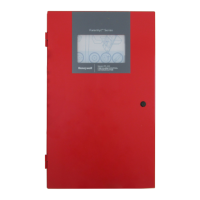
